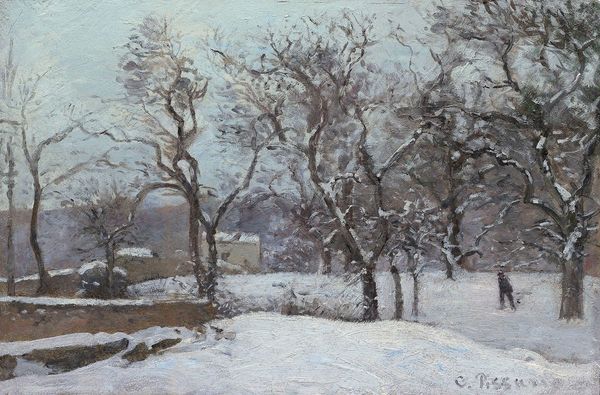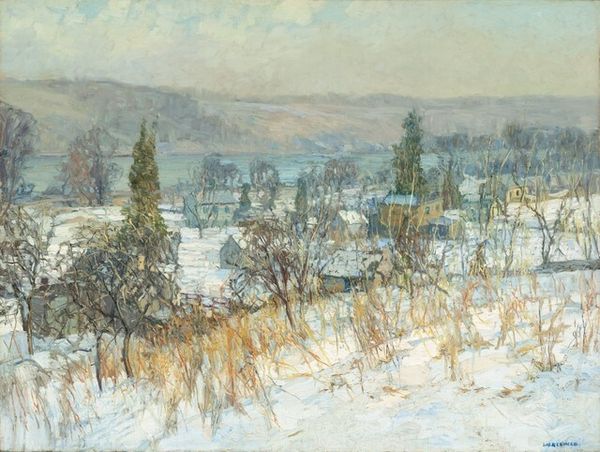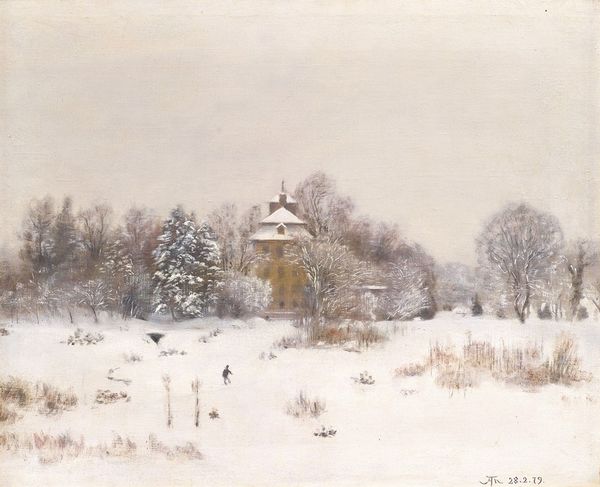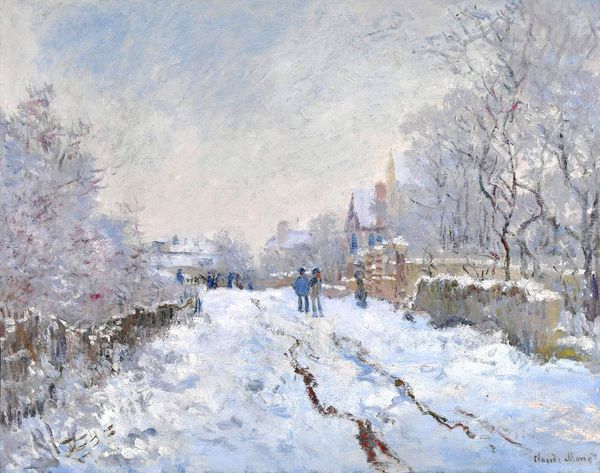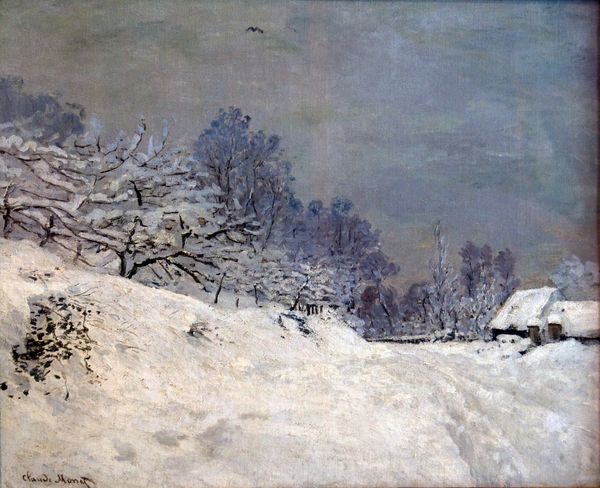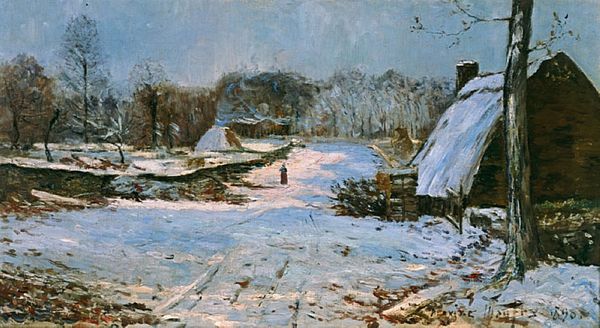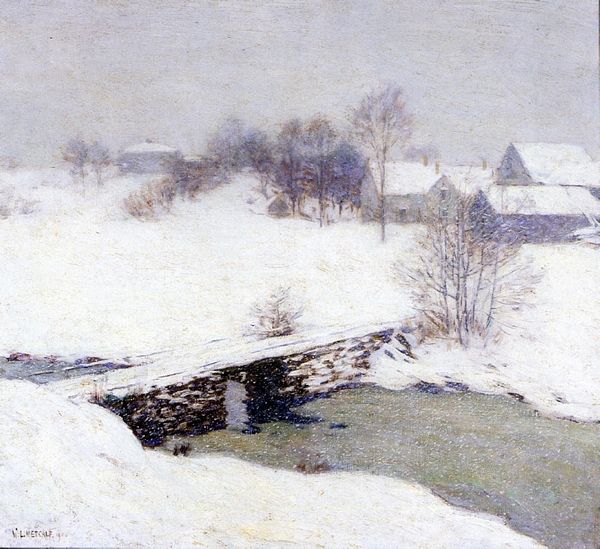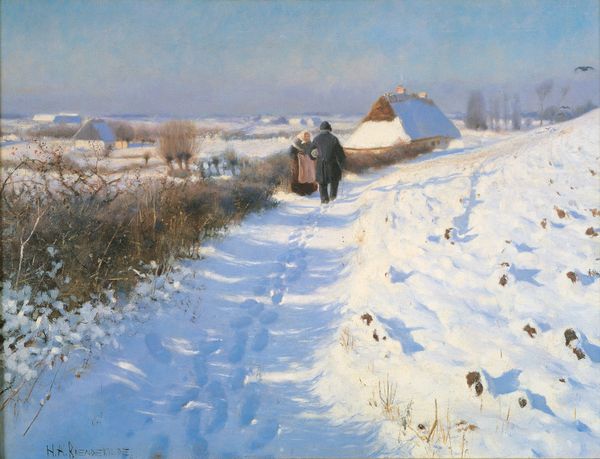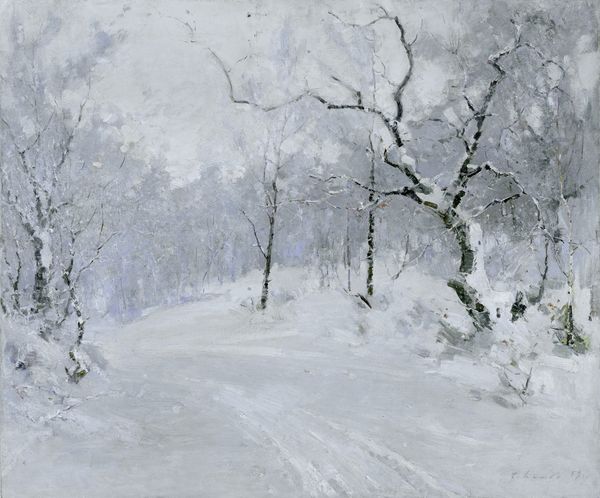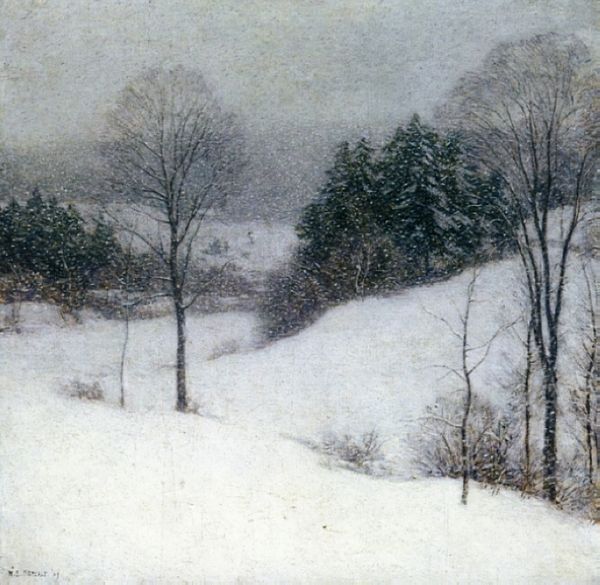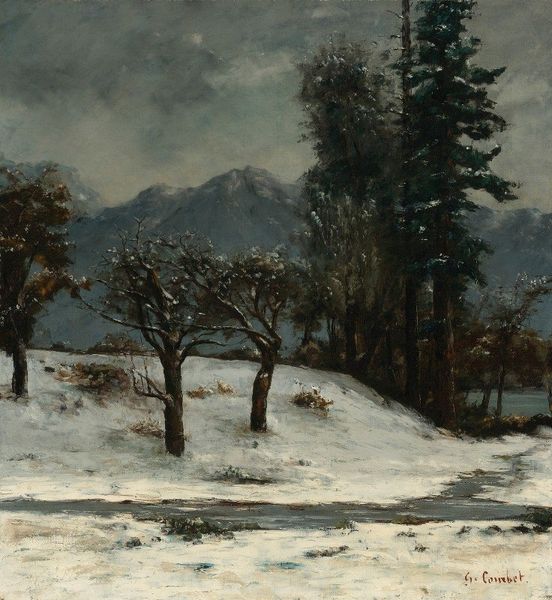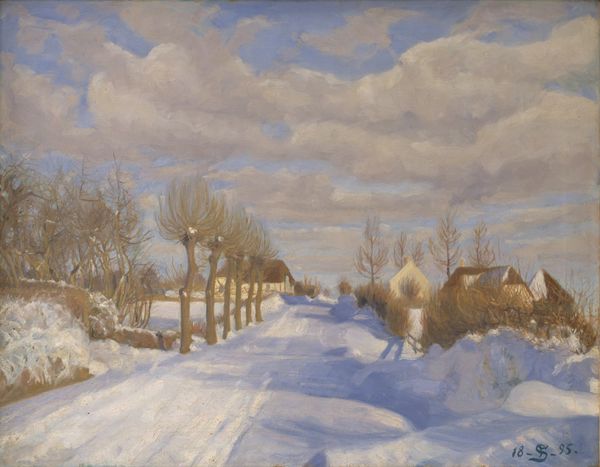
painting, plein-air, oil-paint
#
painting
#
impressionism
#
plein-air
#
oil-paint
#
landscape
#
oil painting
Copyright: Public Domain: Artvee
Editor: Here we have Claude Monet's "The Magpie", painted between 1868 and 1869. It’s an oil painting depicting a snow-covered landscape, almost monochrome. The cool blues and whites create a serene, but very stark, winter scene. How do you interpret this work, focusing on Monet’s method? Curator: Focusing on the process reveals the painting’s radical nature. Monet wasn't just depicting a winter scene, he was grappling with the materiality of snow itself. The impasto – the thick application of paint – becomes the snow. Look at the shadows: they’re not grey or black, but blues and violets, capturing reflected light. Consider also the plein-air method, confronting the actual conditions of painting outdoors in winter and struggling with freezing paint. This struggle is key to its form, isn’t it? Editor: That’s fascinating. It's easy to miss how groundbreaking this must have been, thinking about the logistics alone! Was this just about aesthetics, or something else? Curator: Well, consider the social context. Realism was in vogue, but Monet moved beyond merely representing reality to presenting his *experience* of it, and that means engaging with the raw materials of that experience and the materials of its production. Painting ‘en plein air’ demanded new transportable materials; this altered where and how painting took place, which has profound ramifications in what was painted. The labor, materiality, and context converge, don't they? It elevates his art beyond mere image making. Editor: That really shifts how I see it. It’s not just pretty, it’s a testament to the labor and material engagement in art creation at the time. Curator: Exactly. The magpie itself is a trace of materiality - evidence of animal presence, in contrast to all the cold. Editor: Thank you. I had not considered that it’s so much about confronting these material challenges in art creation itself. Curator: Indeed! It forces us to examine the physical engagement required, shifting art history from only iconographical meaning into art *making* and *production.*
Comments
No comments
Be the first to comment and join the conversation on the ultimate creative platform.
